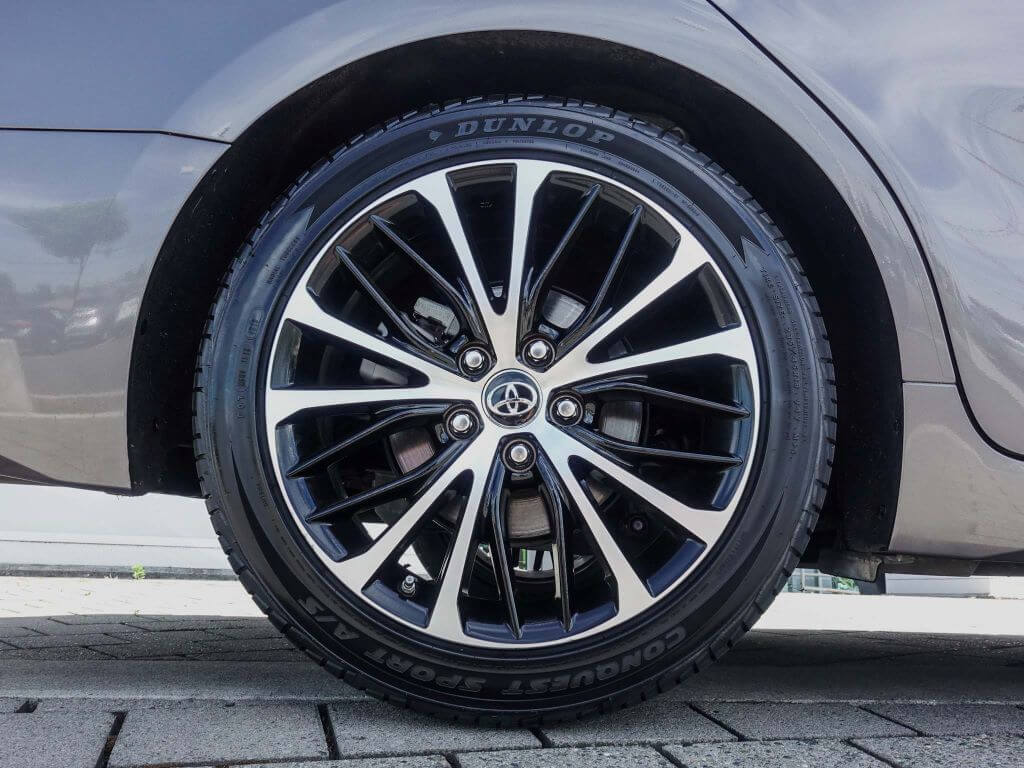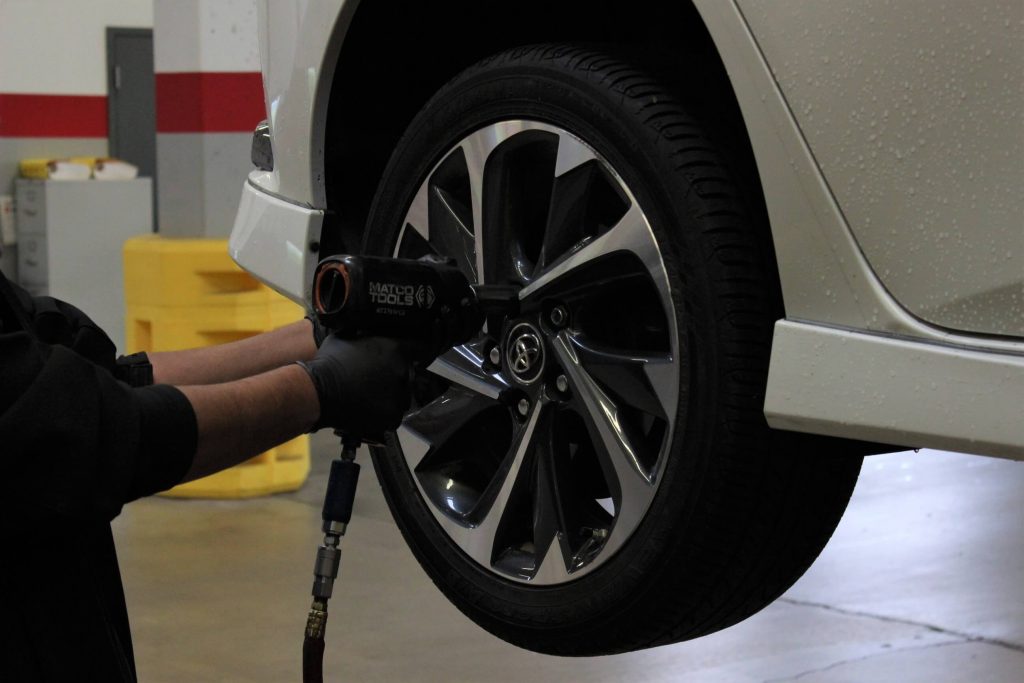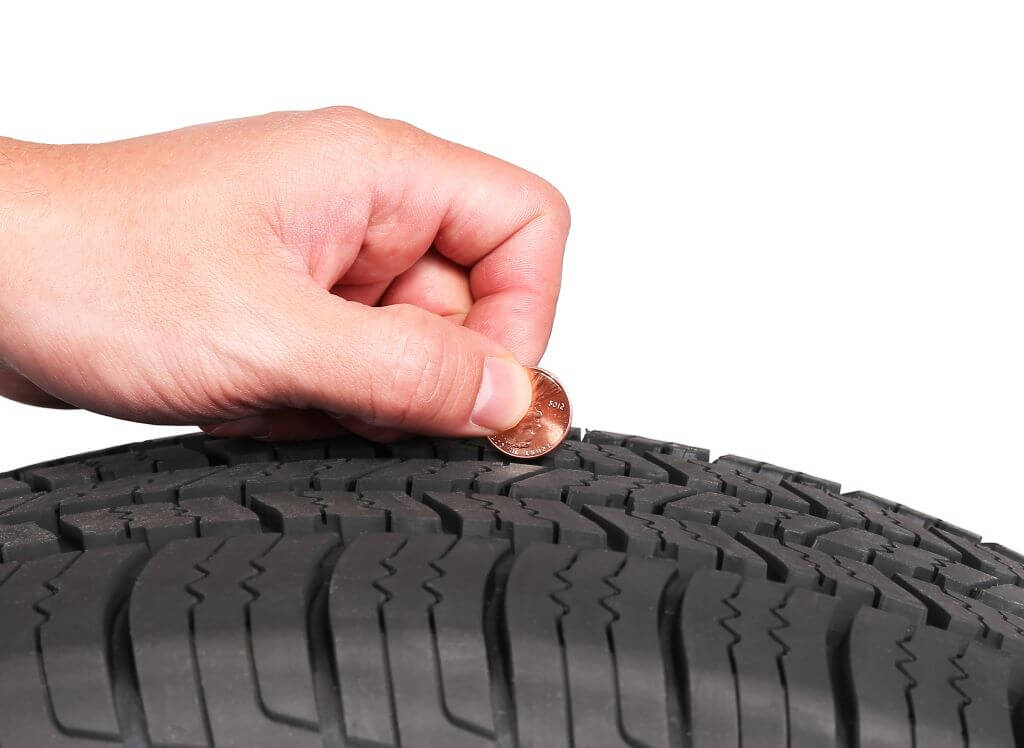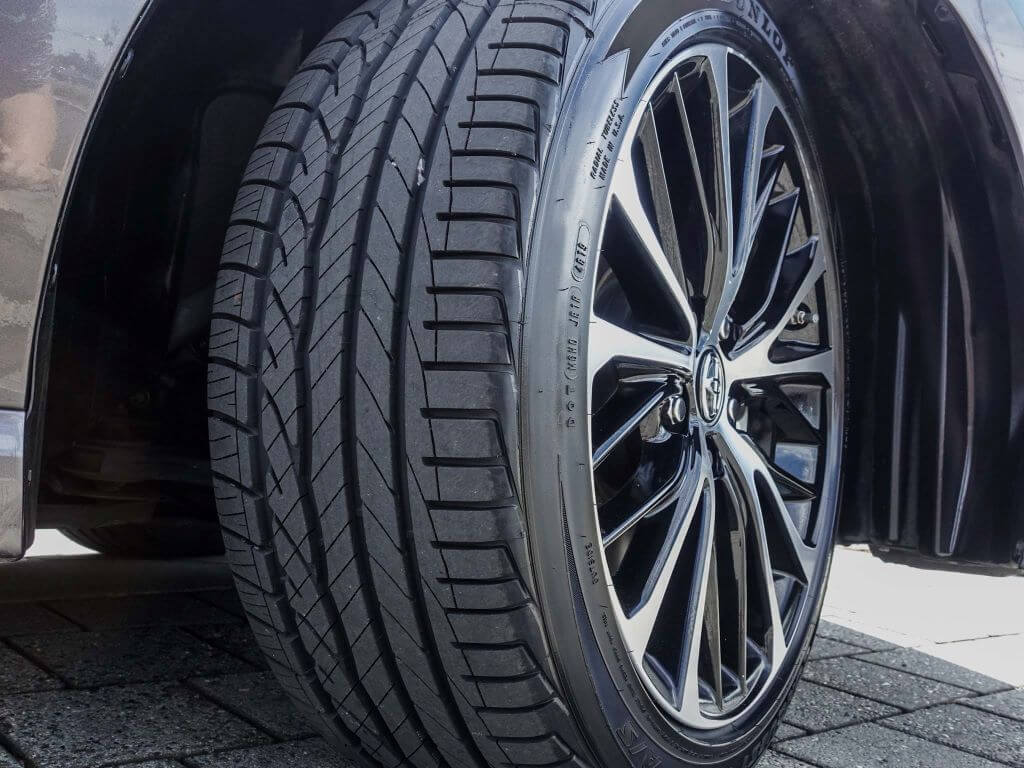We put a lot of trust and faith in the tires of our vehicles, and we also expect them to work hard for us. After all, it’s your Toyota tires that are constantly in contact with the ground, propelling your car at high speeds while also being expected to withstand friction, pressure, and contact with all of the obstacles that a road throws in the way.
If a tire fails, of course, this can lead to massive inconveniences at best, and at worst, it can put you in danger. The last thing you want is for a tire to give out on you while you are traveling at high speeds on the freeway. That’s why it’s crucial to invest in tire maintenance.
A Few Facts About Tires
Tires are made from a good deal more than just rubber. Actually, they contain as many as 200 different raw materials. These days, modern Toyota tires are made from synthetic rubber, which is combined with silica and other compounds to improve their durability. Beneath these rubber tire treads is what’s known as the “skeleton” of the tire, which is constructed from belts reinforced with steel cords.
Beneath these belts are body plies, which are made from rubber reinforced with nylon, rayon, or other synthetic materials. These body plies must be flexible enough to allow the tire to inflate but strong enough to withstand the huge pressure that tires face on the road. Between the body plies, tires may also have a bead filler, which helps tune them to the characteristics of a particular vehicle. Finally, an inner liner helps to maintain the tire’s inflation pressure.

Why Tire Pressure Matters
Your tires are designed for a specific pressure, and this pressure range should be maintained as much as possible. The pressure, however, is very susceptible to changes in temperature, and you’ll need to take that into consideration as well. For every 10 degrees the temperature drops, the tire pressure will drop around one to two pounds. While in most cases this is negligible, it’s certainly something you need to consider on particularly hot or cold days.
If the pressure in your tires is too low, it will have a number of negative side effects. It can cause the vehicle to not respond as well to your steering and even dramatically reduce gas mileage. It’s estimated that approximately 1.2 billion gallons of fuel are wasted every year as a direct result of under-inflated tires.
Low pressure can also cause the tires to ultimately wear out faster and even lead to overheating, which in turn can cause a blowout. That’s why a major part of tire maintenance is to regularly check the pressure of your tires and to keep them at the manufacturer’s recommended level.
If the tire pressure warning light appears on your dashboard, check your tire pressure and add the necessary amount of air at your earliest convenience. If this becomes a chronic issue, there may be a leak in your tire. Visit your auto dealer to see if the tire can be repaired or if it needs to be replaced.

Rotate Your Tires Regularly
Toyota tires, as well as those from many other manufacturers, must be rotated regularly as part of a maintenance schedule to maintain the warranty on the vehicle. Why are car companies such sticklers for this? Well, the simple fact is that the conditions your front wheels face are not the same as those faced by your rear wheels. This means that if tires aren’t rotated periodically, they will wear out at different rates. This can lead to serious safety concerns over time, as some of the tires on the car will be in considerably better shape than others.
Your vehicle manufacturer will have a recommended tire rotation schedule that is included with your car. If you’ve purchased your vehicle from a dealer, such as Beaverton Toyota, they’ll be able to perform that tire rotation as part of your regular automobile maintenance. They’ll also ensure that the tires are rotated as per the manufacturer’s suggested rotation pattern, greatly increasing your safety when on the road.

Monitor Your Tread Depth
Another major indicator of the health of a tire is tread depth. When you purchase new Toyota tires, the tread depth will be around 10/32 or 11/32 inches. This or anything above it is indicative of a good, healthy tire. Of course, over time, this tread depth will begin to decrease as the tires undergo regular wear and tear. Eventually, the treads will wear out to the point that it will be unsafe to continue using the tire. You’ll need to have the tires replaced well before this happens.
Car tires have tread indicator bars built into the treads themselves. These are not visible unless the tire has worn down to the point that the tread is flush with these bars. If this is the case, you’ll need to replace the tire quickly.
If your tire doesn’t have these bars, you can also do the penny test: insert a penny with Abraham Lincoln’s head upside down into the tread. If you can still see the top of his head, replace the tire. Once your tread gets to around 4/32 inches, it should be replaced. If it continues to wear down, the car may actually no longer be street legal, as tire treads less than 2/32 inches cannot legally be on the road.

Don’t Forget About Alignment
If you notice that your car tires are wearing out at dramatically different rates, you may have a problem with your alignment. You may also notice it if your steering wheel is off center. In either case, this can mean that the wheels of your car are not impacting the ground at the proper angle. This can lead to further problems for your car as well as ultimately leading to safety concerns.
To preserve the life of your Toyota tires and keep your vehicle as safe as possible, have the alignment checked by your dealer at Beaverton Toyota whenever you replace the tires. Of course, you can also have the alignment corrected the moment you notice any problems. Often, issues are caused by worn-out shocks or struts, and your manufacturer may need to replace these. Alignment issues must be addressed promptly before they worsen. Good tire maintenance will keep your vehicle running at its best for a long time.






